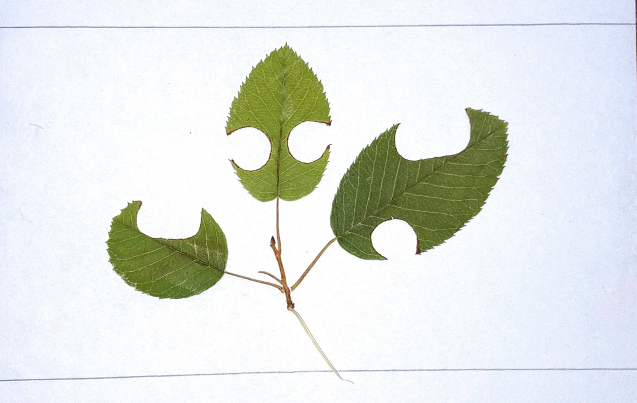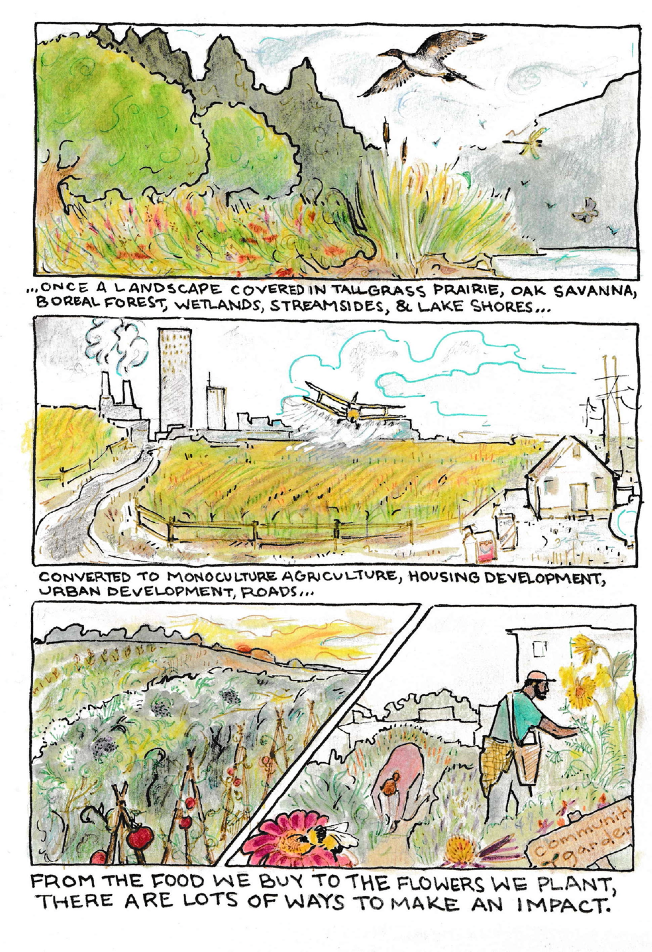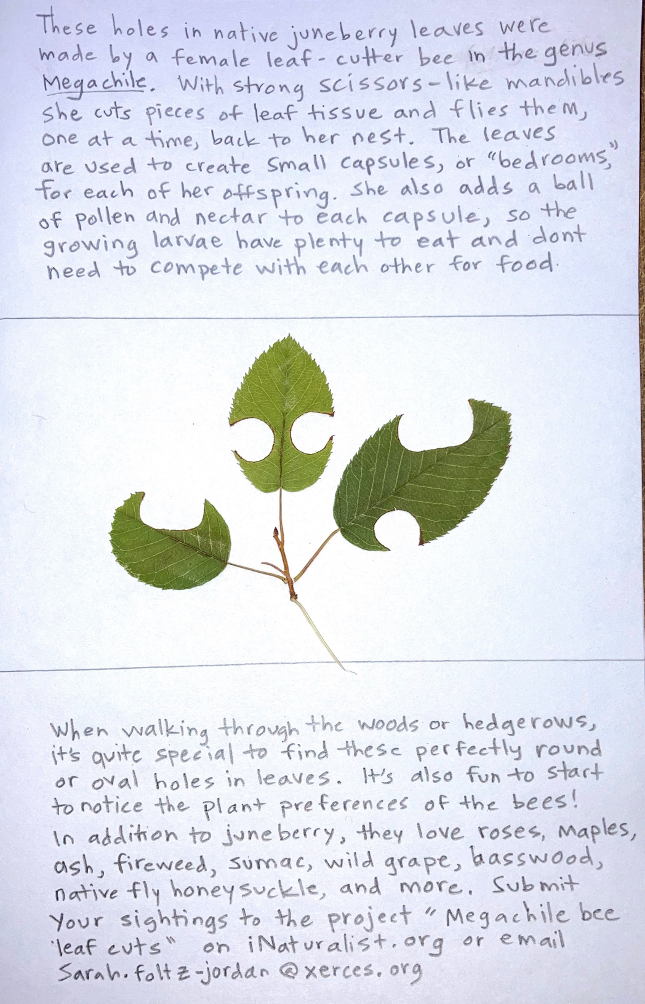A Guide to Hedgerows & Seeding Flexible Habitats
Pollinator conservation and habitat restoration specialist provides an introduction to hedgerows: from their ecological benefits to how to plant one yourself

I first learned about hedgerows at an organic farming conference. A representative from the Xerces Society spoke about their importance and I was fascinated ever since. The Xerces Society for Invertebrate Conservation is an international nonprofit organization that protects the natural world through the conservation of invertebrates and their habitats. I asked their senior pollinator conservation specialist and habitat restoration specialist, Sarah Foltz Jordan, to write a piece for this event. Her niece, Rebecca Green, provided illustrations.
Annie Dugan
Let’s Remember…
Minnesota was once a landscape covered in tallgrass prairie, oak savanna, boreal forest, wetlands, stream sides, and lake shores. These highly functional and beautiful ecosystems were home to a mind-boggling diversity of plants, animals, fungi, and bacteria, interconnected in complex systems that sustained each member of the community, including humans, for thousands of years.
In the relatively short time since European colonization, the vast majority of these areas have been rapidly destroyed—converted to monoculture agriculture, housing development, urban development, roads, and other infrastructure. In most of the state, what little wild areas remain are highly fragmented and severely compromised by invasive species, loss of grazing animals and fire, and other factors. Our bees and other wildlife are left with scraps of low-quality habitat that they are struggling to survive on.

LET’S BEE BETTER
Insects have an outsized impact on ecosystems, serving as agents of pollination, decomposition, and food for songbirds, mammals, and other wildlife. Bees are especially critical for supporting the diversity and longevity of our natural areas, since about 90% of flowering plants count on pollinators for producing the fruit and seed that creates the next generation of plants.
The time is ripe to do what we can to help bees and other wildlife! From the food that we buy to the flowers we plant, there are lots of ways to make an impact. Most bees have pretty basic needs: native flowering habitat, nesting sites, and protection from pesticides. Habitat comes in many shapes and sizes. People often plant meadows, prairies, and wildflower strips for pollinators. Native flowering hedgerows (linear strips of native shrubs) are another great way to squeeze high-quality habitat into a small space, such as on the edge of a yard, park, farm field, or roadside. Keep reading for more information on hedgerow benefits and plant options.

NATIVE SHRUBS TO FEED THE BEES…AND YOURSELF!
Native flowering hedgerows provide:
- Pollen and nectar for insects, especially in early spring when food is limited
- Nesting sites for bees that make their homes in branches & stems
- Leaves and berries for myriads of birds, mammals, and other wildlife
- Visual screening from roads or neighbors
- Windbreaks for crops, living snow-fences
- Edible berries, medicines, and teas for us!
Native plant nurseries offer a wide assortment of native shrubs for our region:
- Juneberry (Amelanchier): spring blooms, edible berries for birds & us
- Hazelnut (Corylus): leaves feed many different kinds of caterpillars, nuts feed small mammals and us
- Willow (Salix): many specialist bees can ONLY feed their babies willow pollen, also a basketry plant
- Wild plum, chokecherry, and others (Prunus): fruit feeds wildlife and us
- Ninebark (Physocarpus): showy flowers and seedheads, excellent wildlife food
- Elderberry (Sambucus): flowers attract longhorn beetles & others, branches provide nests for bees & flowers, fruit of black elderberry are used by us
- Raspberries (Rubus): flowers feed pollinators, stems provide nesting sites for small carpenter bees, berries nourish us
- Native Currants & Gooseberries (Ribes): very early bloom for bees, edible berry for us
- Highbush cranberry, nannyberry, and arrowwood (Vibernum): food for wildlife & some can be eaten.
Mn Artists Presents: Annie Dugan takes place Thursday, September 2, 2021, from 5-9 pm at the Walker Art Center. More information at walkerart.org.